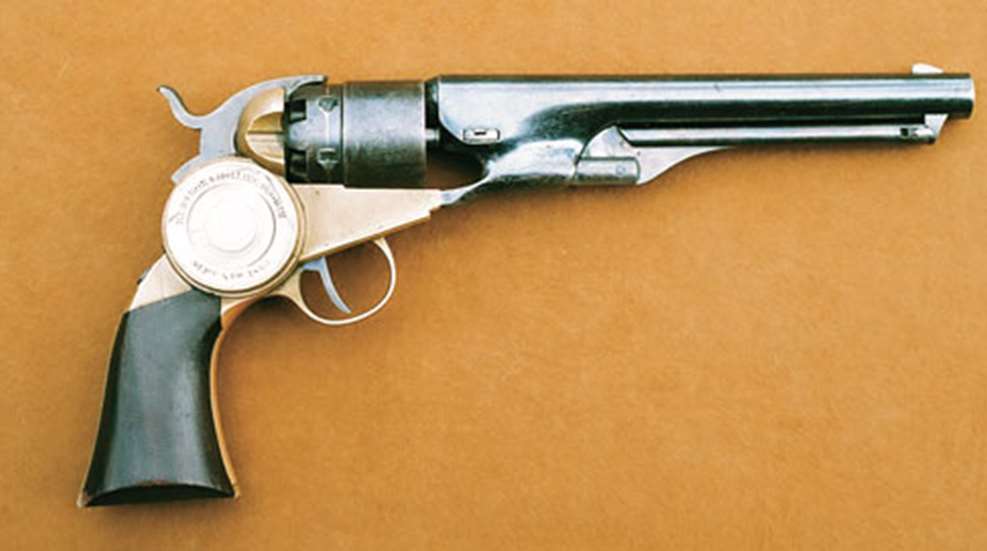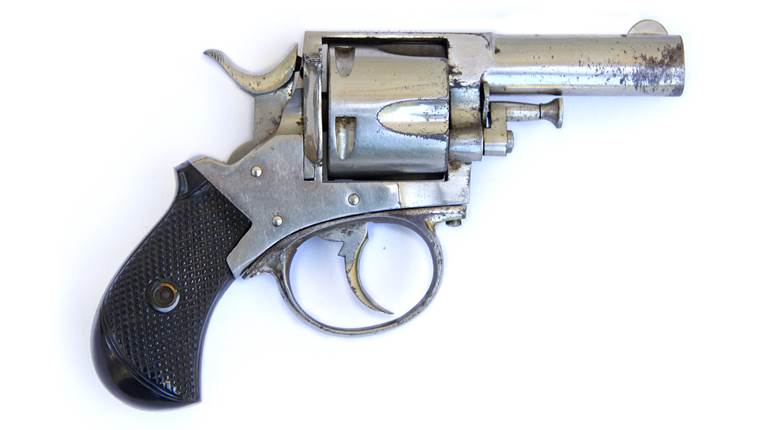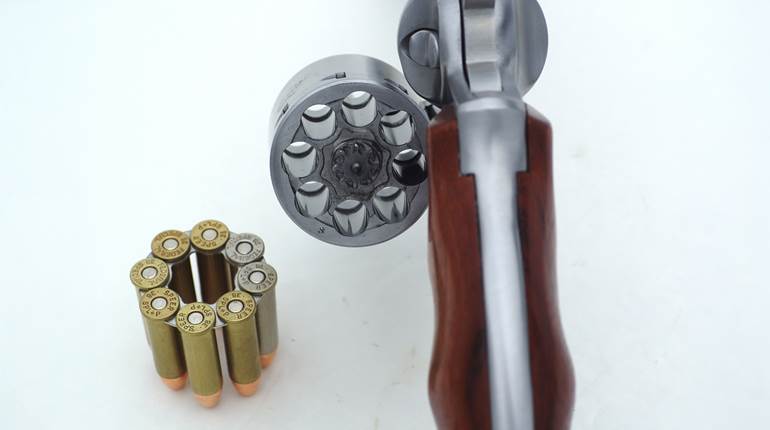
When you see a reference to an “automatic revolver,” you are likely to think first of the British Webley-Fosbery of 1896. If you are really into the arcane stuff, you might also remember Charles Lefever’s patent of 1909, made briefly (1910-1912) by the Union Arms Co. of Toledo, Ohio. In both of those designs, recoil activated an upper unit that cocked the hammer and rotated the cylinder.
Lesser known is an “automatic revolver” that pre-dated the earliest of those other designs by more than 30 years: the Mershon & Hollingsworth. Its developers’ patent, number 39,825, was dated Sept. 8, 1863, and was titled “Improvement In Self-Cocking Revolving Fire-Arms.” The patentees were Ralph S. Mershon and Jehu Hollingsworth of Zanesville, Ohio. At the time of the patent, Mershon had moved to Philadelphia, Pa.
Thanks to collector and arms dealer Randall Bessler, I had an opportunity to examine what may be the patent-submission model of the Mershon & Hollingsworth. Because it was never made in regular production, the one shown here may well be the only in existence.
The basic gun was a .44 Colt Model 1860 Army, serial number 3803, and it was extensively altered to the M&H system. Unlike the Webley-Fosbery and the Lefever/Union, the M&H did not accomplish its “self-cocking” with a moving top unit. Instead, it used a fairly heavy wind-up clock-type spring. The spring powered a deeply notched ratchet inside the hammer that the inventors called the “escape-wheel.” Engaging that, and attached to the hammer, a “hammer-dog” performed the function of a sear.
A fold-out handle on the left side of the frame allows easy winding of the spring on the right side. There was also a lock-out latch on the winding-plate, allowing “normal” revolver operation without the self-cocking feature. A separate manual hammer-block latch kept the hammer from cocking during the winding of the spring.
In “automatic” firing, the M&H revolver worked in the following manner: When the trigger was pulled, a rear extension moved a lever that disengaged the hammer-dog from its notch in the escape wheel. The hammer fell, striking a percussion cap and firing the first shot. At the same time, a lug at the rear of the trigger entered one of the recesses on the escape-wheel, blocking its rotation.
When the trigger was released, its spring pushed it forward, withdrew the lug from the escape-wheel and allowed the wheel to rotate. Powered by the pre-wound spring, the wheel rotated the hammer back to full-cock, re-engaging the hammer-dog, and at the same time, unlocking, rotating, and re-locking the cylinder. The relationship of the cylinder hand, cylinder stop, and hammer is of the original Colt pattern.
For the system to function properly, there had to be a delicate balance in the power of the wind-up cocking spring and the hammer spring. The inventors made the cocking spring strong and the hammer spring relatively light, relying on the mass of the hammer for ignition of the percussion caps.
Even now, nearly 150 years after it was made, the M&H revolver will still fire. However, the cocking spring has lost some power. When the trigger is released, the hammer moves only part-way back. Replacing that spring would be a very large project and would detract from the authenticity of this unique gun.
In the final paragraph of their patent, Mershon and Hollingsworth proved that they were not just a pair of backwoods gunsmiths. They also made sure that the patent protected “The application of the self-cocking mechanism herein described to all chambered cylinders in which metallic cartridges are used.” To my knowledge, no maker of cartridge revolvers has ever tried to infringe upon it.





































